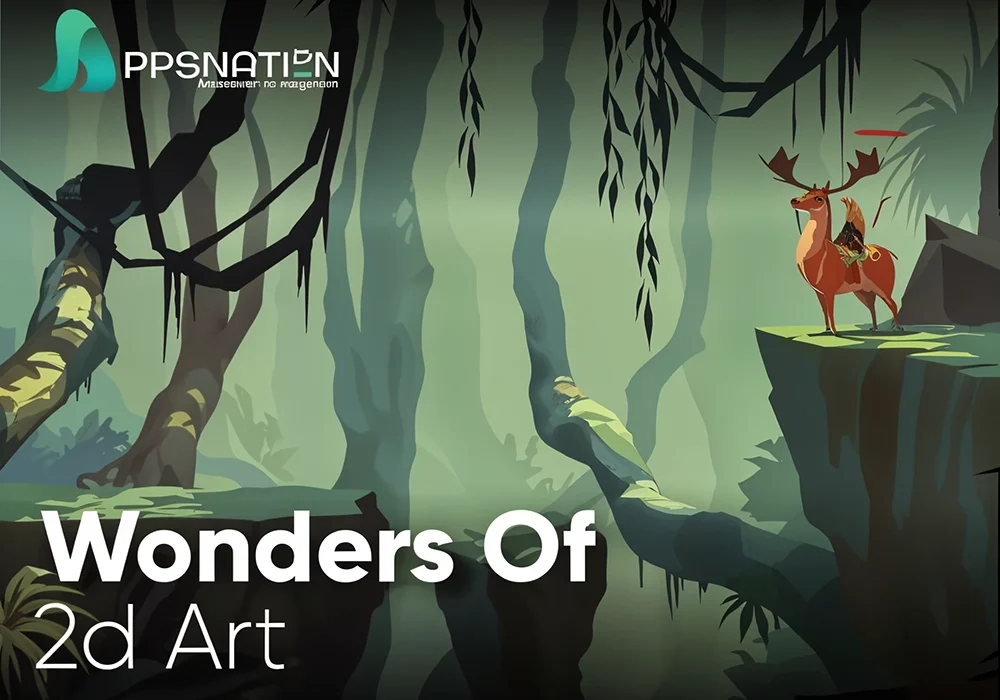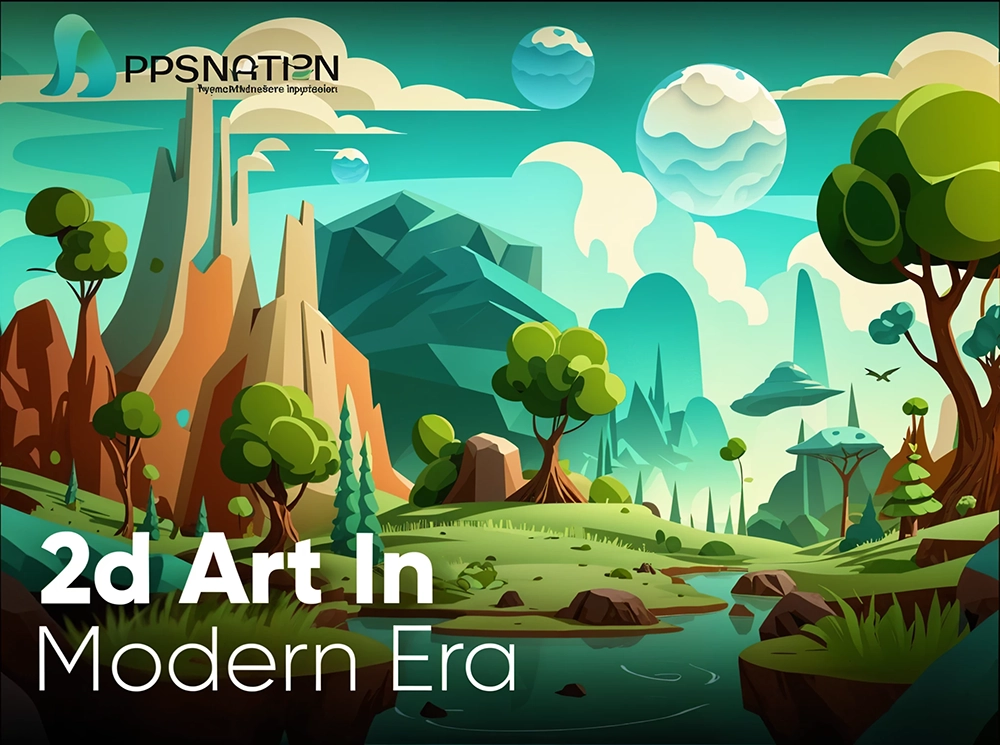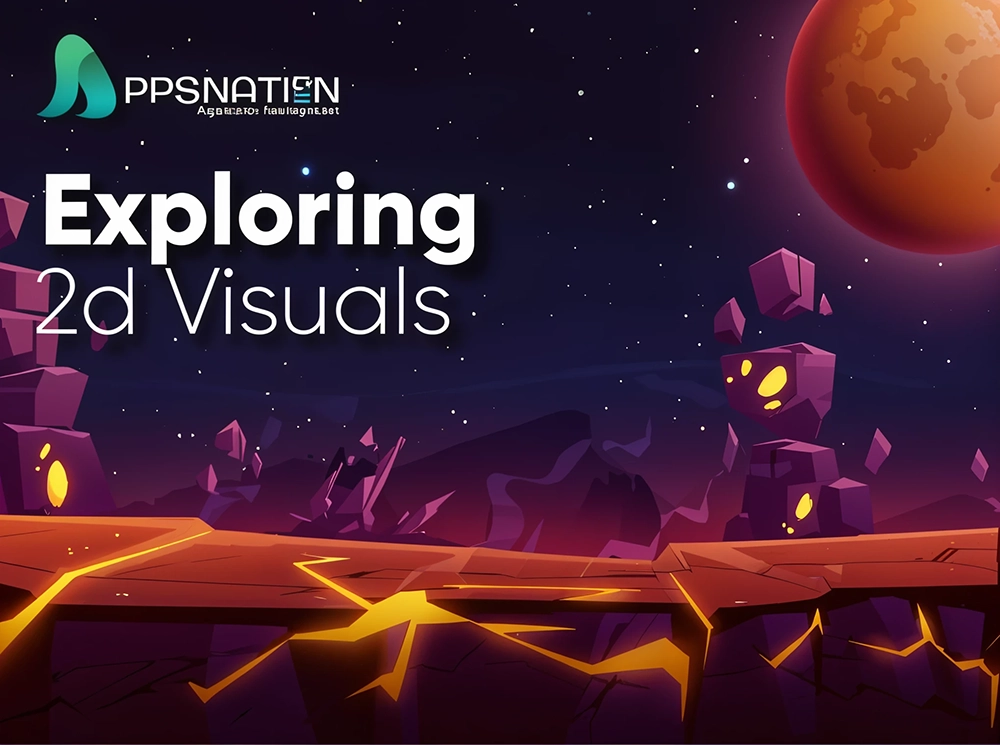Art has played a vital role in human civilization for countless centuries. From ancient cave paintings to modern digital creations, art continues to captivate and inspire us. Among the various forms of artistic expression, 2D art holds a unique place. In this article, we will delve into the world of 2D art, exploring its history, techniques, and the wonders it brings to our lives.
Table of Contents
| 1 | Introduction: Unveiling the Beauty of 2D Art |
| 2 | The Evolution of 2D Art: From Traditional to Digital |
| 3 | Exploring Different Styles in 2D Art |
| 4 | Mastering the Techniques: Tools of the Trade |
| 5 | The Role of Colors and Composition in 2D Art |
| 6 | Capturing Emotions and Narratives: Storytelling through 2D Art |
| 7 | Popular Themes in 2D Art: Nature, Portraits, and Fantasy |
| 8 | The Impact of 2D Art in Various Industries |
| 9 | Artistic Freedom and Creativity in 2D Art |
| 10 | The Digital Revolution: 2D Art in the Modern Age |
| 11 | Enhancing Your 2D Art Skills: Tips and Resources |
| 12 | Exploring the Boundaries: Experimental Approaches in 2D Art |
| 13 | Promoting and Sharing Your 2D Art: Social Media and Online Platforms |
| 14 | The Therapeutic Power of 2D Art: Healing and Self-Expression |
| 15 | Conclusion |
| 16 | FAQs |
Introduction: Unveiling the Beauty of 2D Art
Art is a universal language that speaks to our emotions and allows us to explore the depths of our imagination. Within the realm of art, 2D art stands out for its ability to create visually stunning images on a two-dimensional surface. Whether it’s a sketch, a painting, or a digital illustration, 2D art possesses a unique charm that captures our attention and invites us to interpret the artist’s message.
The Evolution of 2D Art: From Traditional to Digital
Throughout history, 2D art has evolved significantly. It began with primitive cave paintings and gradually progressed through various artistic movements, such as the Renaissance, Impressionism, and Cubism. With the advent of technology, traditional techniques merged with digital tools, giving birth to a new era of 2D art. Today, artists can choose between traditional mediums like pencils and paints or embrace digital platforms that offer endless possibilities.
Exploring Different Styles in 2D Art
2D art encompasses a wide range of styles, each with its own distinctive characteristics. From realistic to abstract, minimalistic to hyperrealistic, artists can experiment and find their unique artistic voice. Some notable styles include realism, impressionism, surrealism, pop art, and manga, among many others. Each style opens up new avenues for artists to express their creativity and evoke emotions in the viewers.
Mastering the Techniques: Tools of the Trade
To create captivating 2D art, artists must master various techniques and familiarize themselves with the tools of the trade. Traditional artists rely on brushes, canvases, and pigments, while digital artists employ graphic tablets, styluses, and sophisticated software. Understanding these techniques and tools empowers artists to bring their visions to life and craft compelling visual narratives.
The Role of Colors and Composition in 2D Art
Colors and composition play vital roles in 2D art. The careful selection and arrangement of colors can evoke specific moods, convey symbolism, and establish a visual hierarchy. Similarly, composition guides the viewer’s eye, creating balance, harmony, and focal points within the artwork. Whether it’s the use of vibrant hues or the placement of elements, artists must consider these elements to create impactful and visually pleasing compositions.
Capturing Emotions and Narratives: Storytelling through 2D Art
One of the remarkable aspects of 2D art is its ability to tell stories and evoke emotions. Artists can weave intricate narratives through their artwork, transporting viewers to different worlds and captivating their imagination. Whether it’s a serene landscape or a poignant portrait, 2D art has the power to stir emotions, spark conversations, and create connections between the artist and the audience.
Popular Themes in 2D Art: Nature, Portraits, and Fantasy
Within the realm of 2D art, certain themes have captured the imagination of artists throughout history. Nature, with its awe-inspiring beauty, has been a constant source of inspiration. Portraits, on the other hand, allow artists to capture the essence of individuals and convey their stories. Additionally, the realm of fantasy enables artists to delve into imaginary worlds, where imagination knows no bounds.
The Impact of 2D Art in Various Industries
The influence of 2D art extends beyond the realm of galleries and museums. It permeates various industries, including advertising, entertainment, fashion, and gaming. Companies leverage the power of 2D art to create compelling visuals that communicate messages, build brand identities, and engage audiences. In the digital age, where visual content is paramount, the demand for skilled 2D artists continues to rise.
Artistic Freedom and Creativity in 2D Art
2D art offers artists a platform for self-expression and exploration of their creativity. Unlike the constraints of the physical world, artists can bend the rules of reality, challenge norms, and express their unique perspectives. This artistic freedom allows for boundless creativity and encourages artists to push the boundaries of what is possible within the realm of 2D art.
The Digital Revolution: 2D Art in the Modern Age
The emergence of digital platforms and software has revolutionized the world of 2D art. Artists now have access to powerful tools that enable them to create intricate artworks, experiment with styles effortlessly, and collaborate with artists from around the globe. Digital art offers convenience, versatility, and limitless possibilities, expanding the horizons of what artists can achieve in the modern age.
Enhancing Your 2D Art Skills: Tips and Resources
Whether you’re a budding artist or an experienced practitioner, continuous improvement is key to honing your 2D art skills. Practice, observation, and experimentation are vital components of growth. Additionally, numerous online resources, tutorials, workshops, and communities provide valuable insights and support to aspiring artists on their creative journey.
Exploring the Boundaries: Experimental Approaches in 2D Art
As art evolves, so do the boundaries and conventions within the realm of 2D art. Artists constantly challenge these boundaries, experimenting with unconventional techniques, materials, and concepts. By pushing the limits of traditional 2D art, these experimental approaches redefine artistic norms, provoke thought, and inspire new possibilities.
Promoting and Sharing Your 2D Art: Social Media and Online Platforms
In the digital age, artists have unprecedented opportunities to showcase their 2D art to a global audience. Social media platforms, online galleries, and artist portfolios enable artists to promote and share their creations with ease. Building an online presence and engaging with art communities can lead to exposure, recognition, and potential collaborations, opening doors to new opportunities.
The Therapeutic Power of 2D Art: Healing and Self-Expression
Beyond its aesthetic value, 2D art holds therapeutic qualities. Engaging in the creative process allows individuals to express their emotions, relieve stress, and find solace. Art therapy has been proven to be beneficial for individuals facing various challenges, providing a nonverbal outlet for self-expression and facilitating healing on emotional and psychological levels.
Conclusion
The world of 2D art is a captivating realm where creativity knows no bounds. From its humble beginnings to the digital age, 2D art continues to evolve and enchant us. It allows artists to express their innermost thoughts, tell compelling stories, and evoke emotions in viewers. Whether you’re an admirer or an aspiring artist, the wonders of 2D art await your exploration.
FAQs
Q: Can anyone learn 2D art, or is it only for the naturally talented?
2D art is a skill that can be learned and developed with practice and dedication. While some individuals may have a natural inclination, anyone can acquire the techniques and enhance their artistic abilities through learning and consistent effort.
Q: What are some famous examples of 2D art throughout history?
There are numerous renowned examples of 2D art, such as Leonardo da Vinci’s “Mona Lisa,” Vincent van Gogh’s “Starry Night,” and Pablo Picasso’s “Guernica.” These artworks have made a significant impact on the art world and continue to inspire generations of artists.
Q: Is digital art considered as valid as traditional art?
Yes, digital art is considered a valid form of artistic expression. With advancements in technology, digital art has gained recognition and acceptance in the art community. It offers unique opportunities for creativity and allows artists to explore new techniques and styles.
Q: How can I find my own artistic style in 2D art?
Finding your artistic style is a personal journey that involves experimentation, exploration, and self-reflection. It’s essential to study different styles, experiment with various techniques, and create art that resonates with your inner voice. Over time, your distinctive style will emerge.
Q: Are there career opportunities for 2D artists?
Absolutely! The demand for skilled 2D artists exists in various industries, including advertising, animation, gaming, publishing, and film. Many artists also pursue freelance careers, selling their artwork online or participating in art exhibitions and fairs.



